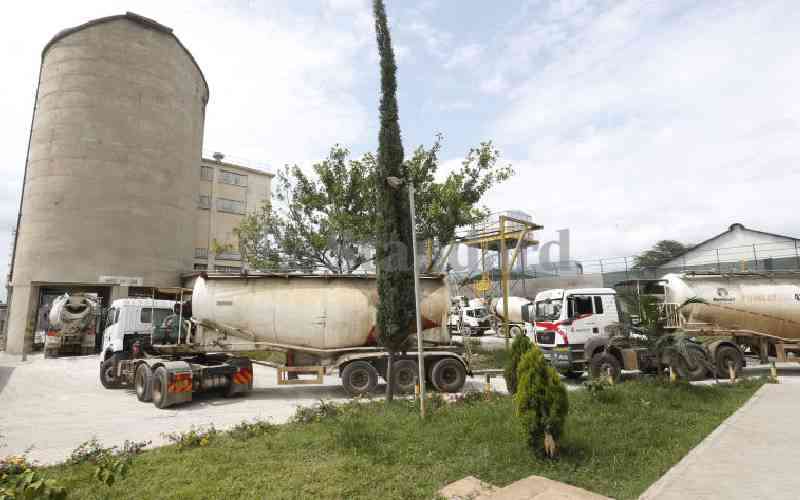By Elizabeth Mwai
A project to develop high-yielding seeds of artemisia annua, the plant used in the manufacture of anti-malaria drugs is underway.
Samples of the plant, which were planted six months ago in Eldoret and Kitale, are due for harvest next month.
The project seeks to make Kenya an alternative producer of artemisia, which is mainly produced in China.
Scientists are concerned that China, which produces about 75 per cent of the raw material for the manufacture of Artemisinin, the leading drug in the fight against the killer disease, cannot match rising global demand.
The Centre for Novel Agriculture Products (CNAP) Artemisia Research Project at the University of York communication manager Elspeth Bartlet says the trials for the hybrids will begin in next month.
Sole source
"Our aim is to produce new varieties suitable for growing in East Africa that will make artemisia growing economically viable," says Dr Bartlet.
In an exclusive interview with The Standard during her fact-finding mission, Bartlet says similar experiments are ongoing in Uganda, Madagascar, India and China.
The project is working to develop improved varieties of the medicinal plant.
Artemisia is the sole source of the leading anti-malaria drug artemisinin, but it only produces the component vital for the manufacture of the medicine in low quantities.
The scientists’ goal is to use the latest genetic techniques to accelerate and enhance traditional plant breeding and create new, high-yeilding, non genetically modified varieties of artemisia.
This, Bartlet says, is through fast tracking growth by selecting the best performing plants based on their genetic characteristics through DNA sequencing.
Bartlet says studies would focus on determining the artemisia concentration in the samples.
She says concentration of artemisia higher than the 0.8 per cent in the crop would be a breakthrough.
Stay informed. Subscribe to our newsletter
Scientist are also be looking at the biomass of the hybrid, which focuses on the leafiness.
genetic mapping
Bartlet says her findings during her visit to the farms Kitale and Eldoret two weeks ago were encouraging.
The plant expert says one of the project objectives is to ensure that the plant has a lot of leaves. "The plants are about two metres high with a lot of leaves. We could not even see other researchers and had to keep shouting to find out where the other was, which is very good?" She says.
Genetic mapping of the plant was done early this year to accelerate the breeding of the herb needed for malaria treatment.
But the real determinant of the superiority of the hybrids will be the concentration of the crucial ingredient.
Rising demand
Since China discovered Artemisinin, as a cure for malaria, it has been a major producer of the plant.
But rising demand for malaria drugs and bad growing conditions in China have raised concerns of shortages.
Insufficient amounts of artemisia will directly mean inadequate supply of Artemisinin for the manufacture of the Artemisinin Combination Therapies, for the treatment of malaria.
Bartlet says the project, which is funded by the Bill & Melinda Fates Foundation, identified East Africa as an important grower of the herb.
East Africa has a history of growing artemisia and the success of the trials will enable it produce more and in large scale.
Bartlet says although the farmers have been growing the crop for export it has not been fetched much money due to low yields.
She says if this experiments establishes that the trial crops have higher concentration of artemisia, it would see Kenya produce new varieties of the important plant.
The plant scientist says similar trials are being conducted in Uganda, which is growing similar varieties because of the climatic conditions.
India is another crucial site, Bartlet says, as it was gaining global recognition due to its increasing role in manufacture of generic drugs.
16,000 children
These generics are mostly supplied to Africa, which has the highest burden of mortality due to malaria.
A majority of African countries cannot afford original drugs due to low budgetary allocations and hence rely on generics.
Malaria kills an estimated one million people a year worldwide and the most effective treatments are Artemisinin Combination Therapies. The demand which is expected to double by 2012 is about 200 million treatments a year.
In Kenya at least 34,000 people die due to malaria, with 16,000 being children.
By knowing the plant’s genome, scientists will be able to breed for high-performance and speedy growth of the crop. The new varieties will improve the supply of Artemisinin for use in Artemisinin Combination therapies, making these life saving medicines more accessible to patients.
 The Standard Group Plc is a
multi-media organization with investments in media platforms spanning newspaper
print operations, television, radio broadcasting, digital and online services. The
Standard Group is recognized as a leading multi-media house in Kenya with a key
influence in matters of national and international interest.
The Standard Group Plc is a
multi-media organization with investments in media platforms spanning newspaper
print operations, television, radio broadcasting, digital and online services. The
Standard Group is recognized as a leading multi-media house in Kenya with a key
influence in matters of national and international interest.
 The Standard Group Plc is a
multi-media organization with investments in media platforms spanning newspaper
print operations, television, radio broadcasting, digital and online services. The
Standard Group is recognized as a leading multi-media house in Kenya with a key
influence in matters of national and international interest.
The Standard Group Plc is a
multi-media organization with investments in media platforms spanning newspaper
print operations, television, radio broadcasting, digital and online services. The
Standard Group is recognized as a leading multi-media house in Kenya with a key
influence in matters of national and international interest.





